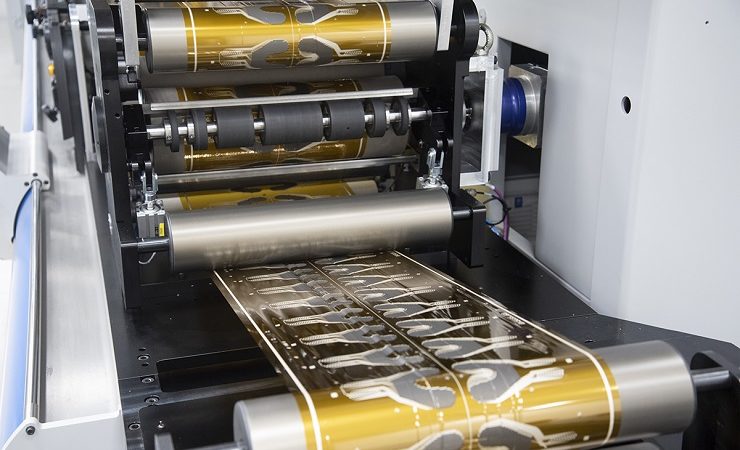InnovationLab, printed and organic electronics developer, has formed a partnership with Heidelberg, with the aim of mass producing printed and organic sensors.
According to IDTechEx, the market for printed sensors, which includes both organic and flexible sensors, will reach US$4.5 Billion by 2030, opening new use cases in automotive, healthcare, supply chain logistics and other markets.
In July 2020 the company set up a dedicated business unit for the development of printed and organic electronics investing €5 million in a complete production line for printed sensors.
The company also started production at its Wiesloch-Walldorf site, drawing on the production capabilities of its flexo department, Gallus. Since then the printing press manufacturer has sold the Gallus group, as part of its financial restructuring plan.
‘Embarking on the development and industrial production of printed and organic electronics represents a milestone for Heidelberg and for Germany as an industrial player. As we see it, our involvement in this production of high-tech sensors opens up the potential for growth in the two- to three-digit million euro range,’ said Rainer Hundsdörfer, CEO, Heidelberg. ‘Our partnership with InnovationLab allows us to offer customers quality of design, reliability, a lower bill of materials, and the highest imaginable volumes. In fact, we have the capacity to produce enough sensors to cover a tennis court every hour under a reliable three-shift production system.’
‘The first step to the widespread adoption of printed and organic sensors is good design, which is one of our historic strengths,’ said Luat Nguyen, managing director, InnovationLab. ‘The second is reliable, high-quality volume production. Our collaboration with Heidelberg fulfils both requirements, enabling us to provide a one-stop shop for printed and organic electronics. Now we can give customers a quick transition from design and feasibility studies through market entry, all the way to mass production. This is our unique Lab2Fab concept.’
Until recently, companies have manufactured sensors using conventional semiconductor foundries, which rely on a nine-step process to fabricate each sensor. While well-established, this approach has several downsides: Design-to-production cycles are slow, iteration is costly—as is the per-sensor price—and choice of substrate is limited to rigid materials such as silicon, making such sensors unsuitable for many use cases.
In contrast, printing sensors using roll-to-roll printing methods provides greater choice in functional materials, substrates and deposition methods, offering flexibility of design to accommodate thousands of different applications.


